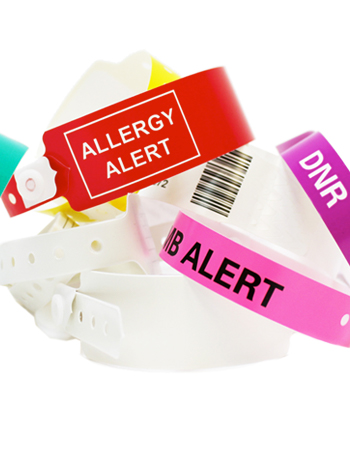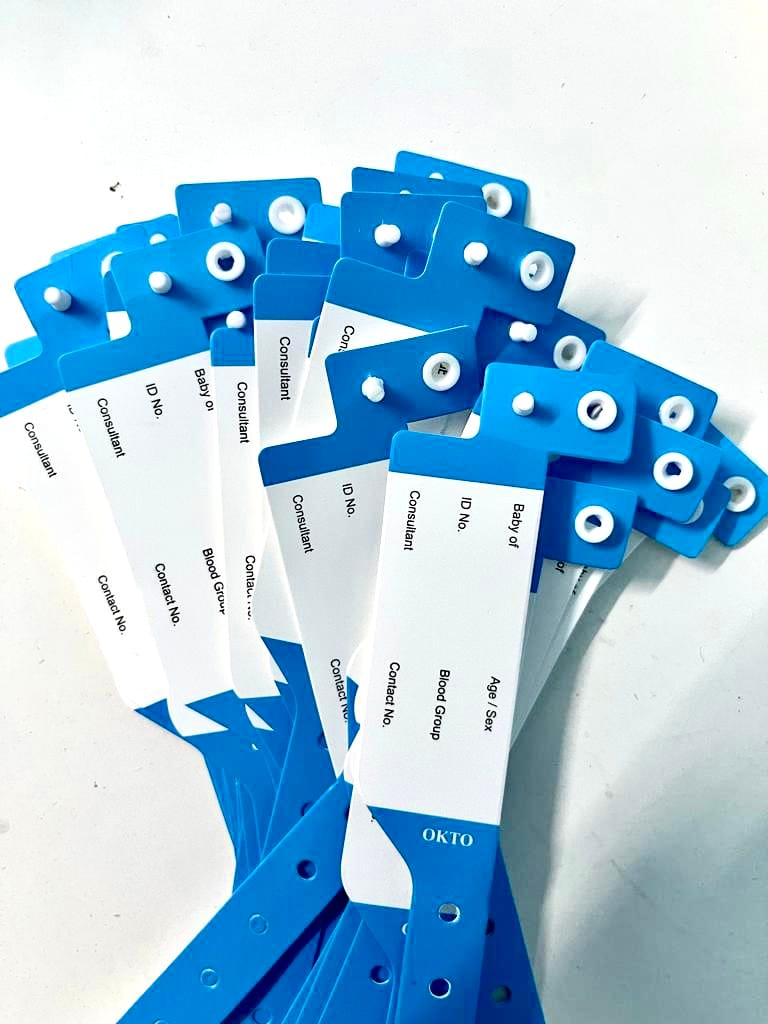Individual Recognition Bands: A Trick Tool for Improved Medical Precision
Client identification bands stand for an important element in the search of medical accuracy and person security within healthcare settings. The true extent of their influence on person end results and overall healthcare quality warrants further assessment.

Relevance of Patient Identification
Person recognition is an essential element of medical care that makes sure the safety and security and accuracy of medical treatment. Appropriate identification methods are important to protect against clinical mistakes, which can cause unfavorable patient end results, including incorrect medicine administration, misdiagnosis, or unsuitable treatment plans. The relevance of precise patient recognition can not be overemphasized, as it works as the foundation for reliable communication among doctor.
In atmospheres where multiple individuals are obtaining treatment all at once, the danger of identity complication rises. Carrying out robust recognition systems helps minimize these risks and enhances client safety and security. Patient Identification Band. Additionally, precise identification contributes to the stability of clinical records, making sure that patient backgrounds, allergic reactions, and previous treatments are appropriately linked to the ideal person.
Moreover, conformity with regulatory requirements and accreditation needs usually mandates rigid individual identification protocols, cultivating a culture of accountability and high quality care. Ultimately, the value of patient recognition goes beyond mere management jobs; it is a fundamental element of supplying high-grade health care that focuses on client safety and security and enhances professional results. Buying efficient identification techniques is not just beneficial-- it's necessary in today's facility health care landscape.
Kinds Of Individual Identification Bands
In health care setups, different sorts of client identification bands are utilized to make sure exact recognition and improve security. These bands work as an important tool in preventing medical errors associated to client misidentification.
The most common kind is the typical wristband, generally made from resilient plastic and printed with the person's name, day of birth, and a special identification number. These wristbands are typically color-coded to communicate certain details, such as allergic reactions or various other clinical problems.
One more kind is the barcode wristband, which includes a scannable barcode connected to the patient's digital health record. This modern technology permits for reliable data access and verification during drug management and other clinical processes.
Furthermore, RFID (Superhigh Frequency Identification) bands are coming to be significantly prominent. These bands can interact wirelessly with health center systems, allowing for real-time tracking and identification of individuals, therefore simplifying operations and enhancing individual safety.

Benefits for Medical Care Companies
Utilizing individual recognition bands uses significant advantages for doctor, enhancing both operational efficiency and person safety and security. These bands work as a vital device in enhancing individual administration processes (Patient Identification Band). By making certain precise identification, doctor can lower the threat of management errors, such as mislabeling examples or misdirecting therapies, which can result in pricey delays and complications
In addition, read the full info here individual recognition bands facilitate seamless communication among the healthcare group. With standardized and easily available patient info, suppliers can make informed choices quickly, enhancing total process. This performance is especially essential in high-pressure environments such as emergency situation departments, where time-sensitive interventions are vital.
The execution of identification bands additionally sustains conformity with regulative criteria and best methods, thus reducing the threat of lawful effects stemming from identification mistakes. The usage of these bands boosts information precision in digital health records, leading to far better treatment control and connection.
Impact on Individual Safety And Security
Precise patient identification is a foundation of health care safety and security, significantly minimizing the possibility of errors that can jeopardize individual health. Making use of client recognition bands is important in making certain that each client obtains the proper therapy, medicines, and treatments. These bands serve as a trusted reference factor for health care experts, lessening the danger of misidentification, which can result in significant consequences such as incorrect drug management or surgical errors.
The execution of standardized individual identification bands contributes to a society of security within health care settings. By giving clear, quickly understandable information, these bands assistance to enhance the relevance of validating individual identity at every phase of treatment. Moreover, they help with communication among employee, ensuring that every person associated with a client's care is conscious of their certain needs and demands.
In addition, making use of client recognition bands can enhance the accuracy of electronic health records, better reducing the capacity for mistakes - Patient Identification Band. By focusing on patient safety through effective recognition techniques, health care companies can cultivate count on and self-confidence among people, inevitably bring about much better professional outcomes and enhanced person fulfillment. The effect of proper client identification can not be overemphasized; it is a fundamental element of high-grade health care delivery
Ideal Practices for Application
Reliable implementation of individual recognition bands is crucial for boosting client safety and security you could check here and reducing errors in healthcare setups. To accomplish this, healthcare organizations need to take on numerous ideal methods. Personnel training is important; all group participants should recognize the value of accurate client recognition and the treatments for band application. Normal training sessions and refresher course training courses can make certain continuous conformity.
2nd, the style of the recognition bands must focus on presence and sturdiness. Bands need to be easy to check out, include essential client details, and endure everyday wear. Utilizing color-coding can further boost fast recognition.


Third, incorporating electronic health documents (EHR) with recognition band systems can improve operations. Automated notifies for disparities in patient recognition can prevent prospective errors prior to they occur.
Last but not least, carrying out routine audits and comments sessions will certainly help recognize locations for renovation. Engaging staff in these conversations promotes a culture of security and accountability.
Verdict
In conclusion, patient identification bands play a crucial duty in boosting clinical precision and making certain person security within healthcare systems. Adopting finest techniques for execution fosters a society look at here now of safety, ultimately leading to improved person results and better trust fund in medical care services.
Person recognition bands represent an essential part in the quest of clinical accuracy and client security within healthcare environments.Utilizing person identification bands provides considerable advantages for healthcare service providers, boosting both operational performance and person security. By prioritizing person security through efficient recognition methods, medical care carriers can foster depend on and confidence among people, eventually leading to better scientific outcomes and boosted client contentment.Reliable application of patient recognition bands is important for boosting client security and minimizing errors in health care setups.In verdict, patient recognition bands play a vital role in boosting medical accuracy and making sure patient security within medical care systems.